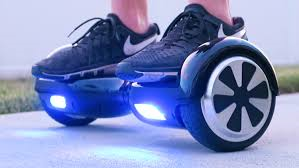Hoverboards have been the ‘must have’ gift this holiday season. But, along with the retail hype came just as much – if not more – hype surrounding the safety of hoverboards.
By now everyone has probably seen or heard of the images and videos on social media of hoverboards bursting into flames and of users sustaining injuries while riding. This flood of hoverboard safety concerns has taken on a life of its own and created more questions than answers. Many people are left wondering if the safety issues are valid or just internet sensationalism gone awry.
Is there a product defect or is it simply operator error? If my kid really wants a hoverboard, is it safe for me to buy him one? How should I safely charge it up? And, is it safe to allow my pre-teen or teen to ride it?
In mid-December, the U.S. Consumer Product Safety Commission released a statement regarding the safety of hoverboards. In sum, it is not clear what is causing some boards to catch fire – either while charging or while in use. So, the U.S. CPSC has made this a high-priority investigation and is currently doing around the clock testing to get to the bottom of these issues. What they do know is that emergency rooms around the country are reporting injuries from hoverboards, but the majority of these injuries can be prevented if users take the proper precautions.
The U.S. CPSC is offering these tips, based on what they know so far, to help reduce the risk of an incident:
- Avoid buying the product at a location (like a mall kiosk) or on a website that does not have information about who is selling the product and how they can be contacted if there is a problem. If you do not think you could find the seller again, were a problem to arise with your board, that should be a warning to you not to do business with them.
- Do not charge a hoverboard overnight or when you are not able to observe the board.
- Charge and store in an open dry area away from combustibles (meaning items that can catch fire).
- Do not charge directly after riding. Let the device cool for an hour before charging.
- If giving a hoverboard to someone as a gift, leave it in its partially charged state. Do not take it out of the package to bring it to a full charge and then wrap it back up. Often, the product comes partially charged. Leave it in that state until it is ready to be used.
- Look for the mark of a certified national testing laboratory. While this does not rule out counterfeits, the absence of such a mark means your safety is likely not a priority for that manufacturer.
- Do not ride near vehicular traffic.
- This tip needs to be reiterated: It is important to wear safety gear when using a hoverboard. We recommend the same safety gear that you would wear when riding a skateboard — a skateboard helmet, and knee and elbow pads and wrist guards for protection from falls









